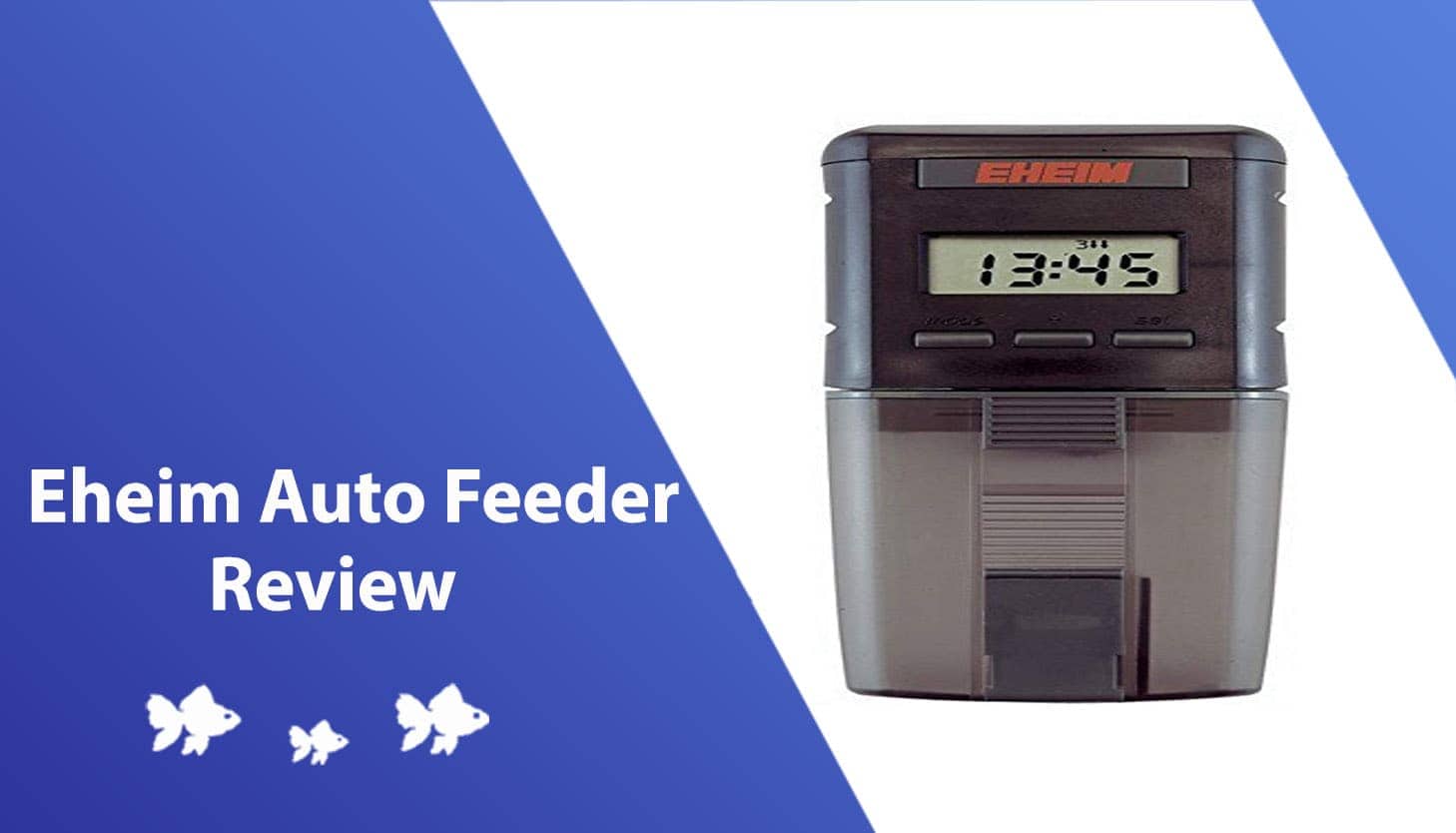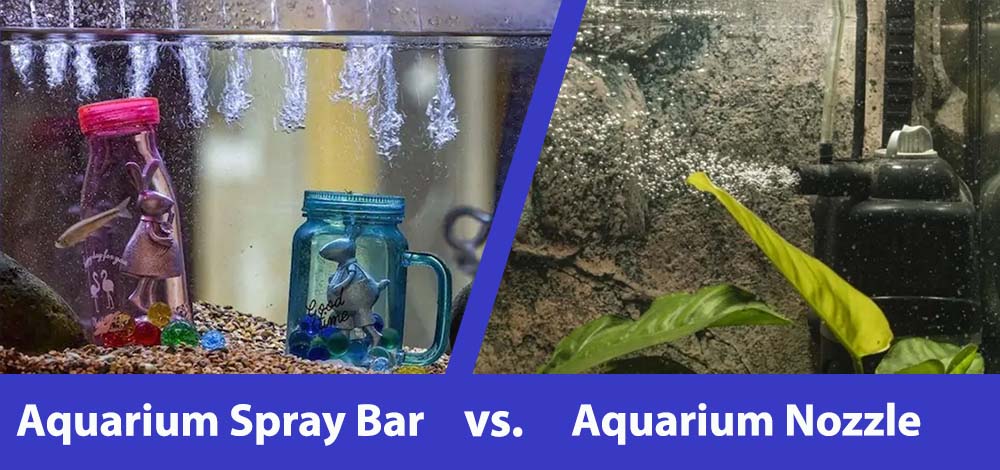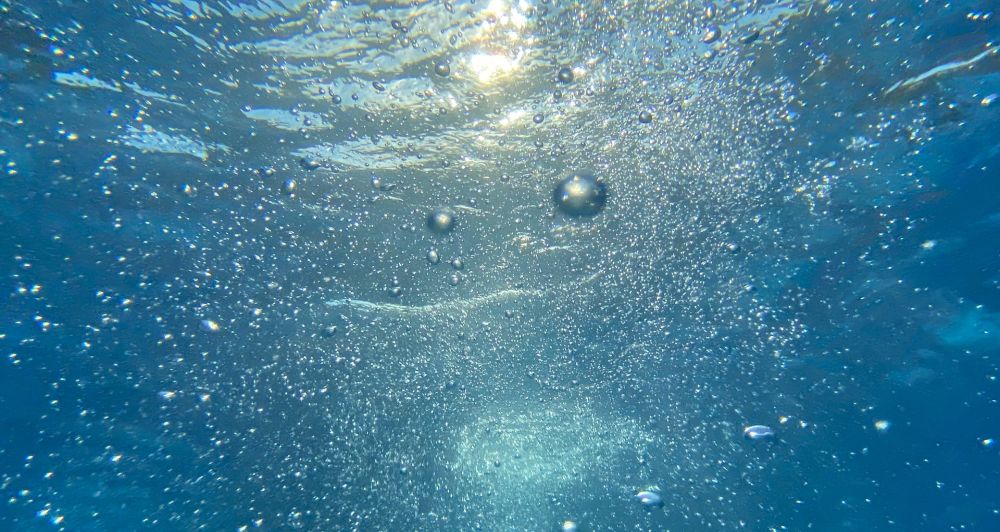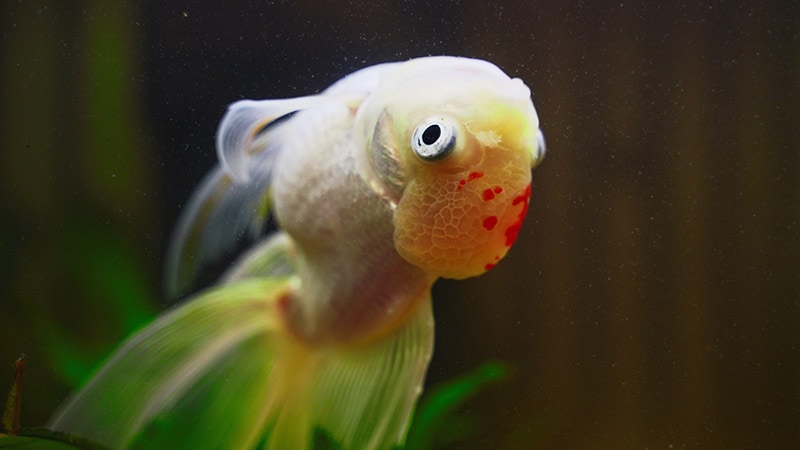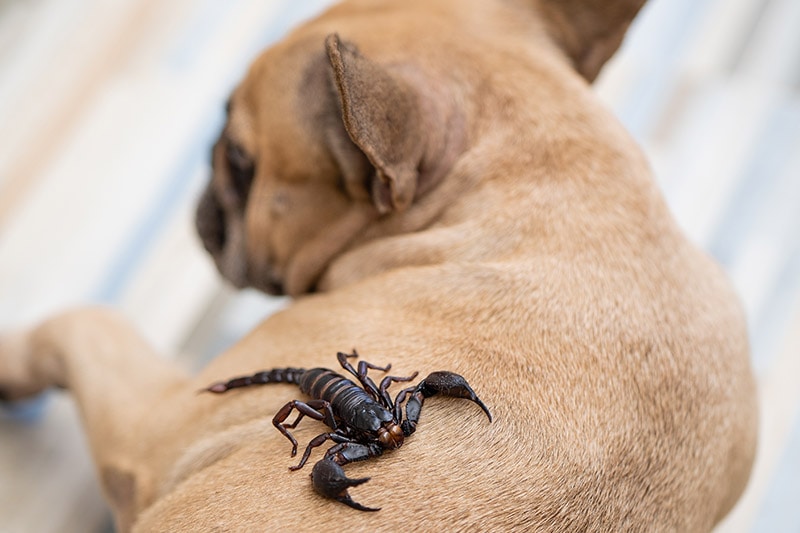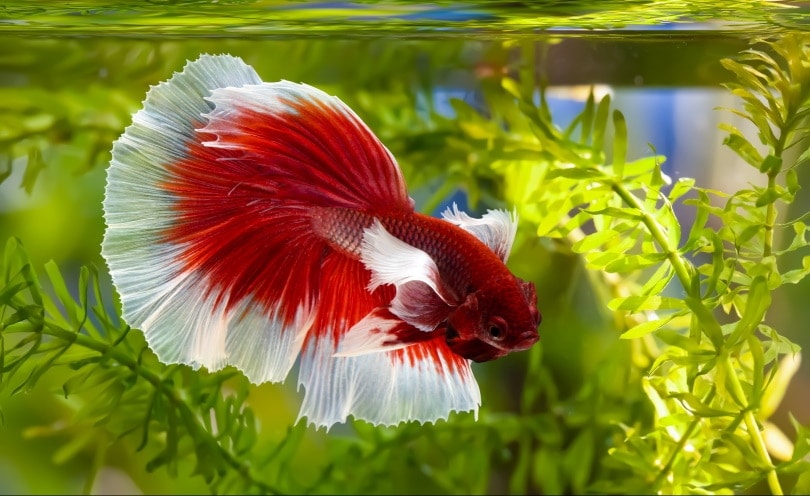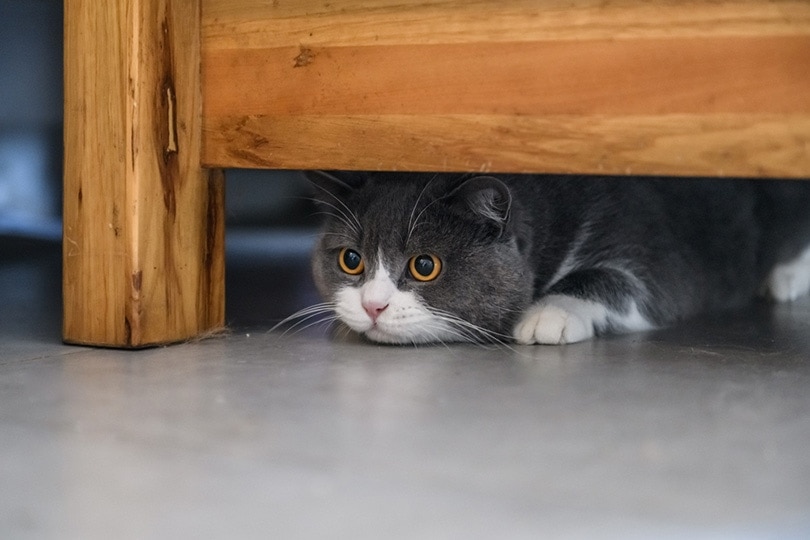Flukes in Koi Fish: Causes, Signs & Care Tips
Updated on
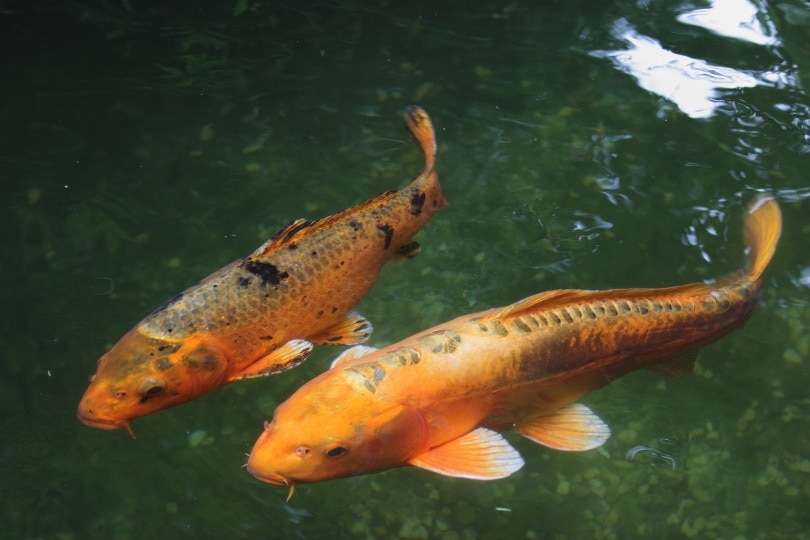
Click to Skip Ahead
Koi are beautiful fish that were developed to be viewed in a pond. Due to their size and breeding, koi are often happiest in the pond environment instead of indoors in an aquarium. Unfortunately, pond fish are often at a higher risk of developing health problems than their aquarium brethren.
The outdoors can be harsh, and no matter how hard you try, keeping pond water pristine is extremely difficult. Exposure to wildlife and water runoff can increase the risk of koi’s exposure to potential pathogens and parasites, and flukes are one of the parasites that koi can develop.
What Are Flukes?
There are actually two types of flukes that koi can become a host to. Gill flukes (Dactylogyrus) and skin flukes (Gyrodactylus) are both relatively common parasites in koi fish, but they are microscopic, so you aren’t going to spot them on your fish. They are so common that flukes are often found when tissues from healthy koi are viewed under a microscope. If they’re that common, then why are they a problem?
Flukes become a problem when they are allowed to develop in large numbers on a fish. Gill flukes attach themselves to the gills and gill plates of koi via their large “grappling hooks” that allow them to take hold and not let go. Although skin flukes are a different species than gill flukes, they have similar “grappling hooks” that allow them to tightly hold on. When present in large numbers, flukes can begin to damage the tissues they are attached to, leading to dysfunction and secondary infections. Even though their names suggest otherwise, gill and skin flukes can both be present anywhere on a koi’s body—they are not specific to the areas mentioned in their names.
Skin flukes are livebearers, while gill flukes are egg layers. They are similar in size, measuring between 0.5 mm and 2–3 mm. Both species use their hooks to latch tightly onto the fish, allowing them to move along the body without losing their grip.

What Are the Signs of Flukes in Koi Fish?
Flashing
Flashing is the act of a fish rubbing their body against surfaces within their environment. They often shoot quickly around the environment, searching for things to rub on along the way. Flashing helps relieve itching and discomfort, and it’s usually easily differentiated from regular swimming behaviors.
Difficulty Breathing
Both skin and gill flukes can do damage to the soft tissues of the gills. Flukes can cause inflammation and irritation of the gills, making them less efficient. They can also become painful or uncomfortable for your fish to use. Because of the swelling, damage, and discomfort, you may notice your fish’s breathing pattern become rapid, labored, or shallow.
Skin Damage
As you might imagine, the hooks that flukes use to attach and propel themselves can cause damage and irritation to the skin. Their feeding from the tissues also causes damage and discomfort. Not only can this damage be painful and irritating to your fish, but it also opens your fish to the risk of infection via the damaged tissues. Secondary infections are common for fish that have fluke infestations.
Skin Changes
When the skin has been significantly damaged, it often begins to scar and develop changes. Thickening of the skin, the formation of plaques, and even permanent color changes can occur with continued or repeated damage, like the damage that is caused by flukes.
Lethargy
Having a parasitic infection will not only make your fish feel crummy, but it will also cause them stress and open them to the risk of other problems. The infestation itself, combined with the extra energy a fish must use for things like flashing and tissue healing, can all cause your fish to become lethargic and not seem like themselves.

Chewing
This is an odd behavior that you might spot in your koi if they have flukes. Some fish will exhibit a chewing movement, even when not eating anything. This is likely due to irritation of the gills, jaw, and face from the flukes.
Inappetence
If your fish feels sick and weak, there’s a good chance they simply won’t want to eat. There’s also a chance that your weakened fish won’t be able to outcompete its pond mates for meals, leading to further weakness and more missed meals as they continue to weaken.
What Are the Causes of Flukes in Koi Fish?
Since flukes are typically present, even on healthy koi, it’s essential to understand why they become a problem for some fish and not for others. What it really comes down to is the baseline health of the fish and the quality of the water.
Poor water quality causes extreme stress for fish, which weakens the immune system and damages the slime coat. Without natural protections against parasites and infections in place, your fish will be susceptible to a variety of health problems, including fluke infestations. Other causes of stress for fish can include bullying, threats from wildlife, lack of hiding places, and receiving too little food.
Water quality aside, you need to work to maintain the health of your koi fish. Providing them with a high-quality, seasonally and species-appropriate diet is one of the main components of maintaining the health of your fish.
Don’t forget to quarantine new fish before introducing them to your pond. Quarantining for a few weeks allows you to prophylactically treat the fish for potential infections, as well as to monitor for signs of illnesses.
How Do I Care for a Koi With Flukes?
Since flukes are often caused by a combination of poor water quality and poor health, you will need to do more than just throw some medicine at the flukes to treat the problem. There are medications available to treat flukes, with Praziquantel being the gold standard at this time. There are some highly effective medications that have been used in the past, but some of them have been removed from circulation due to risks to humans and other animals. Salt baths can be used to help clear flukes from your koi fish as well, but this will likely only be effective if only one fish is showing signs of flukes.
Treatment aside, you will absolutely need to evaluate your pond or tank’s water quality. Check the water for appropriate pH, ammonia, and nitrate levels. In ponds, phosphorus is also commonly checked. Ensure the water has an excellent supply of dissolved oxygen, via air stones, filters, and waterfalls. If appropriate, remove waste and organic matter from the bottom of your pond to reduce toxins and improve water quality.
Make your koi’s environment as low-stress as possible. Add live plants and provide hiding places to help your fish feel safer and less stressed.

Frequently Asked Questions
Are Flukes Contagious?
Yes, flukes are contagious. However, in healthy fish, the risk of infestation is low. The fish’s natural defenses, like a healthy slime coat and properly functioning immune system, create an inhospitable environment for flukes to reproduce in large numbers or do significant damage to their host. Because of the risk of flukes spreading to other fish, you should always quarantine new fish before adding them to your pond or tank.
What Environmental Factors Can Strengthen Flukes?
Many of the things associated with poor water quality create an ideal environment for flukes to live and reproduce. Low-oxygen environments are ideal, as well as overstocked environments and those containing high amounts of organic matter. Fish waste, uneaten food, and rotting leaves and grass can all create a more hospitable environment for flukes to thrive.
I Can See a Parasite Holding Onto My Koi’s Gills. Is This a Gill Fluke?
No, flukes are not visible to the naked eye. If you can visualize a parasite on your fish, then they likely have anchor worms or some other type of large parasite. The best way to identify flukes is via scraping from your fish’s scales or skin. This should only be performed by a veterinarian or someone who has been trained in performing this type of procedure.
Conclusion
Flukes are present on most, if not all, koi fish. What keeps them in line is the health of your fish and their body’s ability to fend off parasites and infections. If your fish become unhealthy and stressed, their natural defenses will fall, making them susceptible to fluke infestations.
Poor water quality not only hurts your fish but also creates an ideal environment for the reproduction of flukes. Flukes can spread between fish, and if all of your fish are stressed or ill, then they can all become very sick. Maintaining excellent water quality, quarantining new fish, and ensuring the health of your koi are the best ways to prevent problems with flukes.
See Also:
Featured Image Credit: Else Siegel, Pixabay



